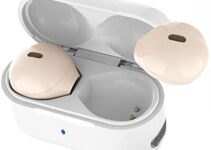SunHydrogen has provided a first look at the prototype design for its forthcoming nanoparticle-based green hydrogen technology, and Plug Power has secured a 5 MW electrolyzer order from Lhyfe. A Chinese-US research group, meanwhile, claims to have achieved a highly stable saline water electrolysis using Rhodium nanocrystals.
SunHydrogen has provided a first look at the prototype design for its forthcoming nanoparticle-based green hydrogen technology. The nanoparticle technology directly uses the electrical charges created by sunlight to generate hydrogen when the sun is shining. The prototype can also power the catalyst and membrane integration assembly with renewable grid electricity. The prototype design integrates the company’s proprietary catalysts, light absorbers, and membrane integration assembly. The panel housing deploys modular materials that are easily scalable for mass manufacturing. SunHydrogen said that the design allows for efficient use of sunlight to maximize hydrogen production during the day, with minimal water consumption.
Lhyfe has ordered 10 of Plug Power’s 5 MW proton exchange membrane (PEM) electrolyzer systems. It is reportedly the most significant electrolyzer order placed by a French company. “With these electrolyzers of a total capacity of 50 MW (equivalent to up to 20 tons per day), Lhyfe aims to produce a renewable green hydrogen using primarily wind and solar-power for various mobility applications in Europe, including forklifts and light commercial vehicles, such as the Master Van from Hyvia, Plug’s joint venture with Renault, with hydrogen deliveries as early as 2023,” wrote the French hydrogen company. Lhyfe also launched its UK operations, joining its subsidiaries in Germany, Denmark, the Netherlands, Sweden, and Spain. “The speed with which this deployment is taking place confirms the growing enthusiasm of European countries for renewable hydrogen,” said Matthieu Guesné, CEO of Lhyfe. The company will inaugurate the world’s first offshore hydrogen production demonstrator in Saint-Nazaire later this month.
Chinese Academy of Sciences researchers have claimed in a new study that Rhodium nanocrystals on porous graphdiyne show unmatched electrocatalytic performance and highly stable saline water electrolysis. They reported a route to synthesize well-defined Rhodium (Rh) nanocrystals in an aqueous solution using formic acid as a reduction agent and porous graphdiyne (GDY) as the stabilizing support. High-resolution high-angle annular dark-field scanning-transmission electron microscopy images show the high-density atomic steps on the faces of hexahedral Rh nanocrystals. The paper, published in Nature Communications, suggests that sp–C~Rh bonds can stabilize Rh nanocrystals. “Experimental and theoretical results demonstrate that the stepped surface and special interactions form between GDY and Rh endow the catalyst with excellent electrocatalytic activity and stability for large current density H2 production from alkaline simulated seawater (saline water),” the scientists said. “For example, the Rh/GDY can deliver 1000 mA cm−2 at a very small overpotential of 65 mV vs. RHE, which is better than the reported electrocatalysts, and commercial Pt/C electrocatalyst.”
Ballard Power has announced a fuel cell module order from Medha Servo Drives, a rail system integrator that has been contracted by Indian Railways to develop India’s first hydrogen-powered trains.
Air Liquide and Faurecia have completed a technological and economic feasibility study for long-distance heavy-duty vehicles. “Currently in the prototyping phase, the product is set to hit the market in 2027,” said Air Liquide. The partnership between the two French companies dates back to October 2021.
Zero Emission Industries announced the first close of its Series A funding round. “The round is led by Chevron New Energies with additional investment from U.S.-based shipping and logistics company Crowley,” said the maritime hydrogen tech company.
Energy European Commissioner Kadri Simson participated in the first EU-India Green Hydrogen Forum this week.“We want to develop plans for cooperation on green hydrogen together in the next few months,” Simson said. She explained that the EU wants to import hydrogen, while also setting up a framework for harmonized safety and environmental standards with partners such as India.
This content is protected by copyright and may not be reused. If you want to cooperate with us and would like to reuse some of our content, please contact: [email protected].


